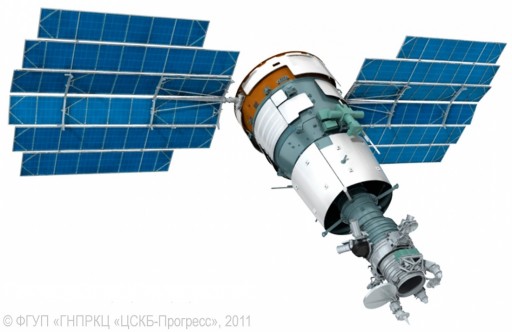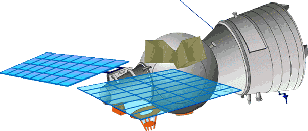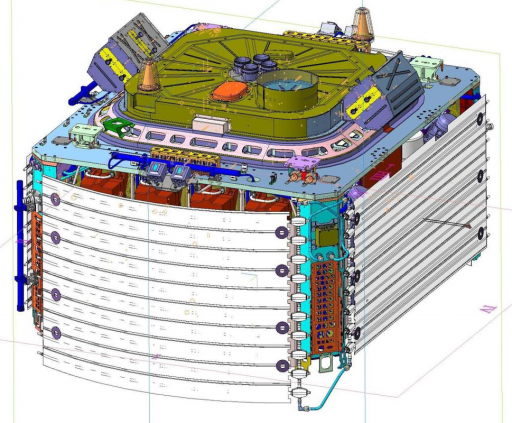Bars-M Satellite Overview

The Bars-M satellite project is a classified or semi-classified project under operation by the Russian Ministry of Defence as a replacement for the Kometa spacecraft that have been in operation since the 1980s combining a topographic imaging system and high-resolution Earth imaging system.
The Kometa satellites were developed in the 1970s under the framework of the Yantar reconnaissance program. They were also known as Yantar-1KFT satellites, based on the first generation of Yantar satellites that started development in 1964 to augment and eventually replace the Zenit reconnaissance spacecraft that performed missions of 8 to 15 days and achieved ground resolutions of one to two meters. Over 500 Zenit missions were flown between 1961 and 1994 with Yantar being operated alongside with the purpose of conducting reconnaissance on larger areas and delivering cartographic data.
The first Yantar film-return satellite flew in 1974 and the program saw a number of different satellite variants, going through a number of improvements over the years.
The Yantar-1KFT satellites were introduced in 1981 and completed 21 missions through 2005, operating from orbits at altitudes between 180 to 270 Kilometers for mission durations of three to six weeks, returning exposed film to the ground at the end of the mission.

The Kometa satellites had a launch mass of around 6,600 Kilograms using the Yantar bus module, a Zenit film return capsule and a payload module hosting a TK-350 and KVR-1000 imaging system. TK-350 was a wide-angle stereo camera system that covered a field of view as large as 200 by 300 Kilometers with a spatial resolution of ten meters. The system acquired fore and aft stereo pairs with an 80% overlap, exposing 30 by 45-centimeter film frames. KVR-1000 was the high-resolution component of the payload acquiring panchromatic imagery at a meter ground resolution of one to two meters and a field of view of 40 Kilometers. Both cameras covered a wavelength range of 510 to 760 nanometers.
Imagery from Kometa was used for military applications as well as a variety of topographic purposes such as updating of existing maps, the generation of large scale maps, digital maps, forestry cadastre, land management, resource management and a number of other applications. After the fall of the Soviet Union, Kometa imagery was available on the commercial market starting in the early 1990s. These were the highest resolution images that were available on the commercial market with resolutions up to two meters. One-meter resolution imagery started distribution in 2001, however, the availability of commercial electro-optical satellites led to a significant decrease of demand on imagery of film-return vehicles.
To keep up with technological standards, Russia initiated the development of a Kometa follow-on in the mid-1990s under the Bars designation which was to be a topographic electro-optical imaging system consisting of a wide-angle and high-resolution camera and a set of laser altimeters. The original Bars design called for the satellites using the Yantar spacecraft bus that continues to be operated in electro-optical imaging satellites such as Resurs and Persona. Since the Bars program was operated by the military, virtually no details on the satellite design or development progress were available.
The Bars program stalled in the early 2000s due to the typical problems encountered by Russian programs, notably a lack of financial support and technical challenges. Eventually, Bars was canceled in favor of an advanced design known as Bars-M that stepped away from the Yantar-based design to use a completely new spacecraft platform.
In charge of the program is TsSKB Progress that develops and manufactures the satellite platform while the payload is developed and built by the Leningrad Optical Mechanical Association (LOMO). The contract for the Bars-M satellites was signed in 2007 with an initial launch date set for within five years.

Overall, the Bars-M platform measures 4.0 by 2.3 by 2.3 meters with a mass of around four metric tons. The satellite consists of three sections, a Service Module, an Instrument Module and a Payload Module that hosts the Karat imaging instrument. The payload section is an independent module with its own structural systems so that it can be manufactured separately from the other spacecraft components for integration late in the manufacturing process.
The Bars-M satellite bus is an unpressurized satellite platform using aluminum honeycomb panels that form a lattice structure and provide mounting structures for the various satellite components. Radiators are installed on the outside of the platform to radiate excess heat into space as part of the satellite’s thermal control system. Electrical power is generated by two deployable solar arrays.
BOKZ-M star trackers build by IKI are used on the satellite to identify and track star patterns to accurately calculate the vehicle’s three-axis attitude using an onboard algorithm. The star tracker weighs about four Kilograms, is 37 by 23 by 23 centimeters in size and operates at a data update frequency of 0.3Hz (one update every three seconds).
The star trackers can support spacecraft slew rates of up to 0.2°/s. CCD detectors are used by the star trackers coupled to a power signal processor. Bars-M also uses sun sensors. Time synchronization and orbit determination is accomplished through the use of a GPS/Glonass receiver.
Bars-M uses a propulsion system designated SVIT, consisting of 12 attitude/fine control thrusters and a main engine to be used for orbit adjustments and maintenance. As a modern spacecraft, the satellite likely uses reaction wheels for attitude control. An upward facing telemetry antenna indicates that the satellite is planned to use Geostationary Communication Satellites for data and imagery downlink.
The payload module of the Bars-M satellite consists of a dual laser altimeter and an opto-electronic complex known as Karat, comprised of a wide-angle and high-resolution camera. The specifications and capabilities of the payload are largely unknown, but likely match or surpass those of the Kometa satellites. Bars-M covers a ground swath of 60 Kilometers with its high-resolution imaging system while the low-resolution instrument achieves a swath of 1,300 Kilometers.
